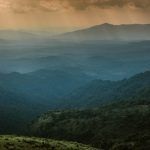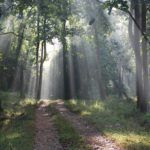The story of how one of the world’s favourite beverages came to be grown in India is as fascinating as the place where it transforms from the bean to the cup. Set in the lap of nature and luxury, this is the home of coffee in India—Chikmagalur.
Along, long time ago, sometime in 1600 CE, an Indian Sufi saint named Baba Budan went on a pilgrimage to Mecca. On the way back, he made a halt at Mocha, a port city on the Red Sea coast of Yemen—one of the major centres of the early coffee trade and which gave the world the famous Mocha beans. Later, it’d also lend its name to the delicious American invention of caffé mocha. But this isn’t the story of what the Americans did, or as purists would say, undid, to coffee. This is the story of what happened when that Indian Sufi saint visited Mocha.
Apparently, while at Mocha, Baba Budan like all other guests to the city was served a dark liquid drink of coffee. He enjoyed the refreshing beverage so much that he wished to bring it back to his homeland and produce it here. The Arabs however, were very protective of their coffee, and quite understandably so! At the time, coffee was exported to other parts of the world only in roasted or baked form, so that nobody else could grow their own and everybody would be forced to buy this elixir from the Arabs alone. Baba Budan though, was resolute.
The accounts of what he did next vary. Some say he concealed them in his beard, others say he strapped them to his chest, still others recount how he hid them in his tunic. Whichever story you wish to believe, fact remains that Baba Budan secretly brought seven seeds of coffee to India. He then made his way to his hermitage in the Western Ghats of Karnataka. He planted the seven coffee seeds in his backyard, and those grew into the first coffee plants of India. For a considerable time, the plants remained a mere garden curiosity, spreading slowly to the neighbouring areas. It wasn’t until two centuries later that the British set up the first commercial coffee plantations on the slopes and feet of the same hills where Baba Budan first introduced coffee— in and around the district of Chikmagalur. Their relentless drive to set up coffee plantations led to the establishment of a flourishing coffee industry in India and transformed the little town of Chikmagalur into prime coffee country. Chikmagalur thus, played centre-stage to the one defining event that would ensure brighter mornings for many generations of Indians to come. As the celebrated Indian writer R.K. Narayan noted, “The origin of Indian coffee is saintly. It was not an empirebuilder or buccaneer who brought coffee to India, but a saint, one who knew what was good for humanity.”
Aroma In The Air

Today, Chikmagalur stands as a quaint, sleepy town, snuggled in a comfortable plantation life. Much of the waking hours here revolve around coffee. The scent of roasting beans waft in thick and heavy as you near the town. The freshly-tarred Bangalore-Mangalore highway forks off to a narrow, smooth road that snakes its way through thick plantations on either side towards Chikmagalur. Indian coffee is the only shadegrown coffee in the world, and thus, the plantations here have tall silver oak, teak and other trees growing in tight rows to provide shade to the coffee bushes. Pepper vines climb up many of these trees, adding to the income of the estate owners and the lushness of the landscape.
As you approach the town centre, the entryways to several coffee roasting units appear, thus explaining the heady aroma in the air. Interspersed with them lie bigger processing plants, some complete with their own R&D facilities. The town centre consists of two major roads, along which many of the budget hotels and guesthouses are located; these are also the shopping and entertainment hubs. Many of the buildings here are regular glass and concrete structures, a few however, stand as reminders of colonial times and still others exhibit local architecture, with tiled roofs sloping low.
Until recently, most of the travellers who frequented here were coffee growers, traders, buyers or suppliers, whose only intention was to do business and hurry on. Lately though, Chikmagalur has been attracting a different breed of tourists— millennials from the metros looking for an experiential getaway. While here, they part with a part of their disposable incomes to live and experience for themselves a slice of the coveted planter’s life, with estate living, plantation visits, laidback walks, coffee tastings, dinner under the stars and a variety of other activities thrown in the mix. To cater to them, a range of resorts and homestays have sprouted up in the outskirts of the town.
– Words SATARUPA PAUL






















































